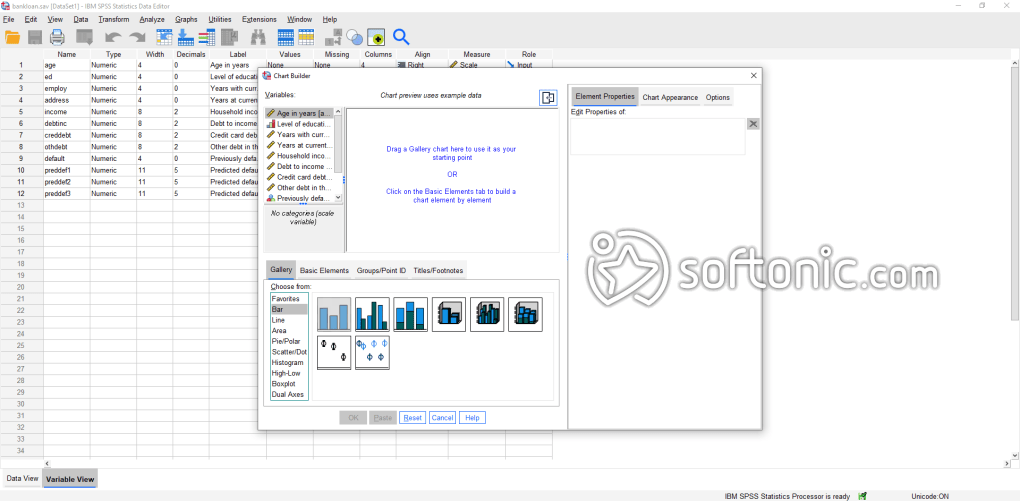

The tables of the Output Viewer are saved (click File - Save or Save As) with a file type of. The Output Viewer also allows you to edit and print your results. By default it also show you the programming language for the commands that you issued (called syntax in SPSS jargon), and most error messages will also appear here. The Output Viewer shows you tables of statistical output and any graphs you create. Statistical results will show up in the Output Viewer. New data values will show up in the Data Editor. In order to avoid confusion it is usually a good strategy to close out any Data Editors you're done using.Īs you ask SPSS to carry out various computations and other tasks, the results can show up in a variety of places. (It is also possible to open some non-SPSS data files by this method, such as Excel, Stata, or SAS files.) SPSS lets you have many data sets open simultaneously, and the data set that you are currently working with, the active data set, is always marked with a tiny red "plus" sign on the title bar. To open a different data set, click File - Open - Data.

When you close your last Data Editor you are shutting down SPSS and you will be prompted to save all unsaved files.
#SPSS SOFTWARE#
sav, a file type that most other software cannot work with. Data files are saved with a file type of. Changes you make to your data are not permanent until you save them (click File - Save or Save As). When you open an SPSS data file, what you see is a working copy of your data. You will always have at least one Data Editor open (even if you have not yet opened a data set). The Data Editor lets you see and manipulate your data. Part two discusses common statistics, regression, and graphs. For now, we assume you are just carrying out very simple tasks.

In the long run, you will want to learn to just work directly in the programming language, because this is how you document your work, and good documentation is key to both trouble-shooting and replicating complicated projects. As a beginner, it will be strategic to learn a bit of both SPSS programming and the menus.
#SPSS SERIES#
However, some tasks cannot be accomplished from the menus, and others are more quickly carried out by typing a few key words than by working through a long series of menus and dialogs. Menus and dialog boxes are useful because they give you visual reminders of (most of) your options with each step of your analysis.

The good news for beginners is that you can accomplish most basic data analysis through menus and dialog boxes without having to actually learn the SPSS language. The SPSS software is built around the SPSS programming language. Those who plan on doing more involved research projects using SPSS should follow up this brief intro with more in-depth training.įor information about SSCC lab accounts, the labs, Winstat and more see Information for SSCC Instructional Lab Users. This document is intended for students taking classes that use SPSS Statistics or anyone else who is totally new to the SPSS software. IBM SPSS Statistics is software for managing data and calculating a wide variety of statistics.


 0 kommentar(er)
0 kommentar(er)
